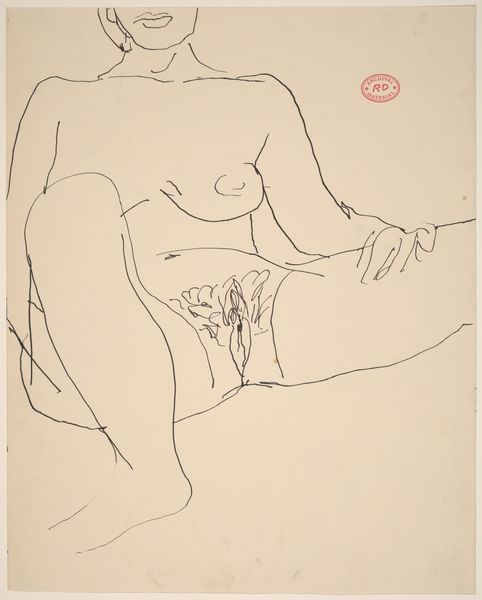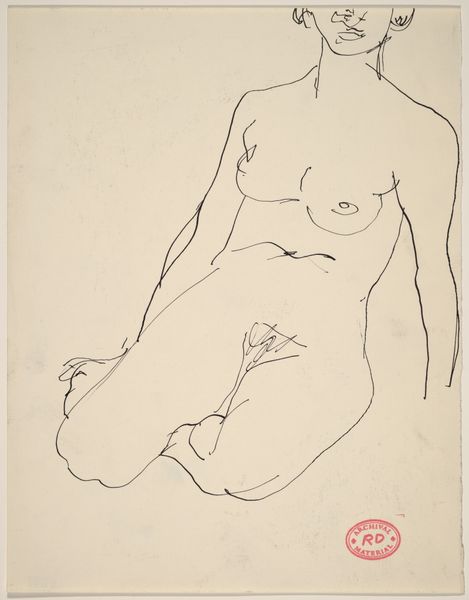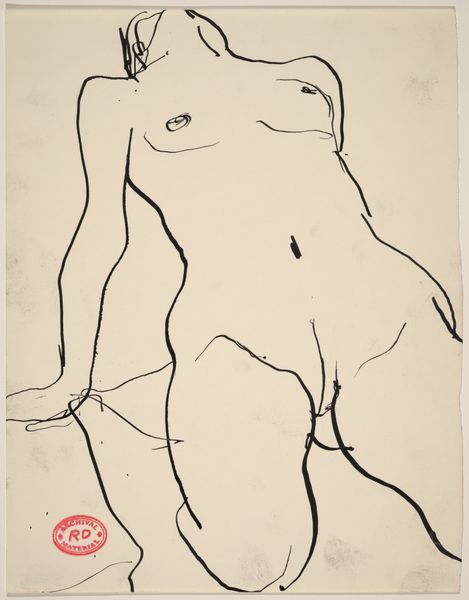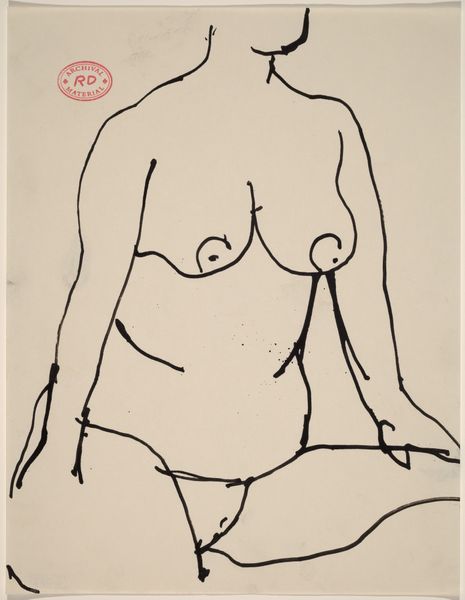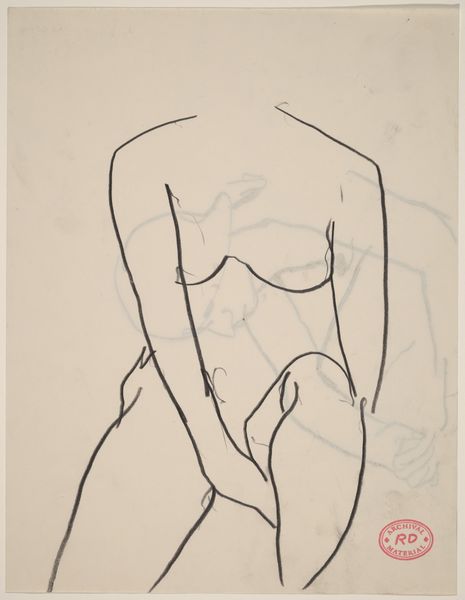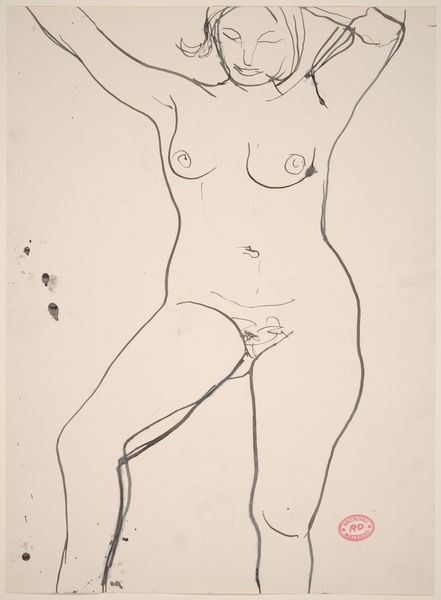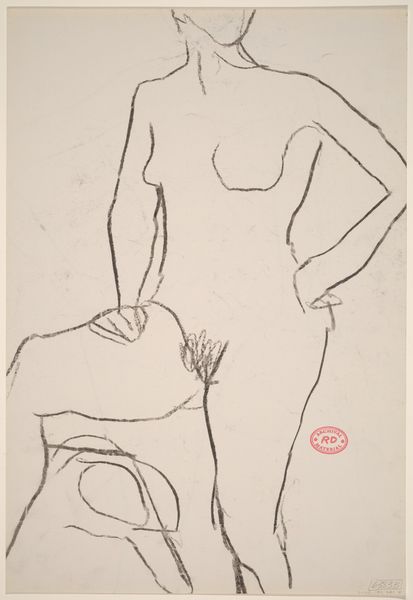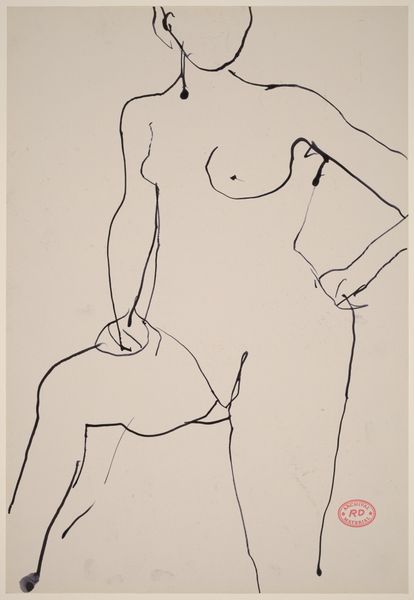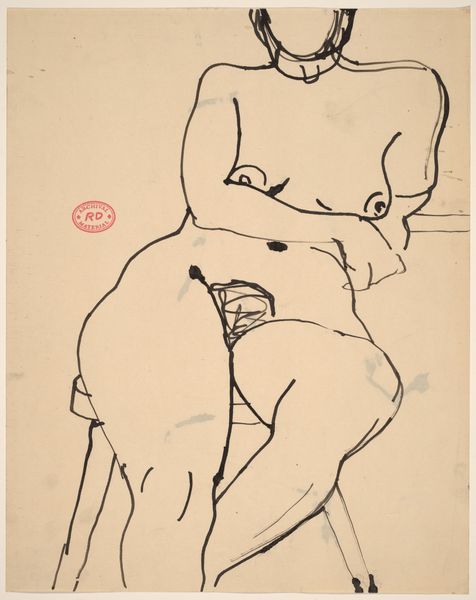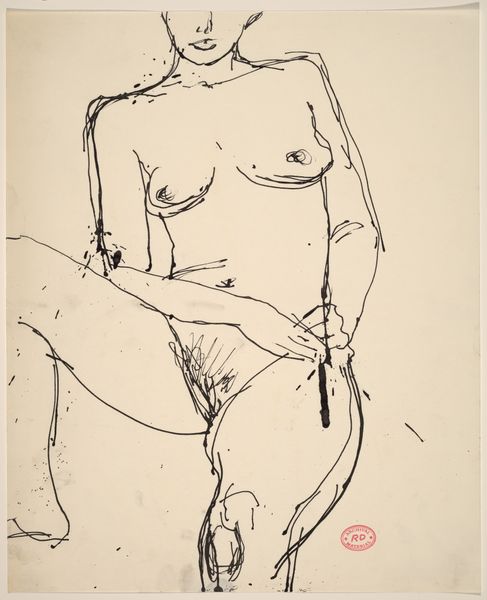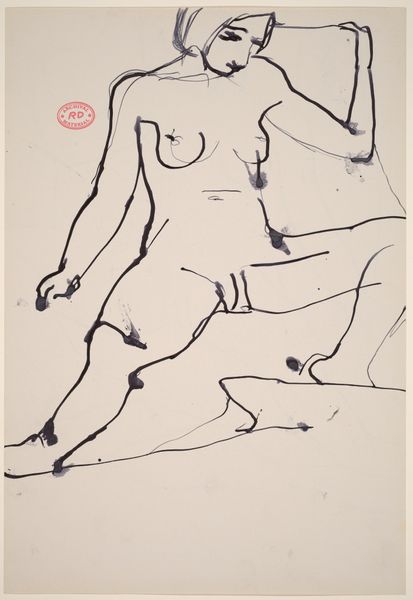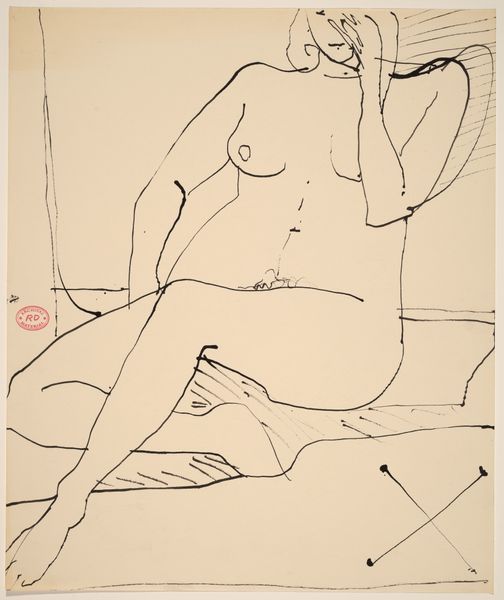![Untitled [nude seated on floor with hands behind her] by Richard Diebenkorn](/_next/image?url=https%3A%2F%2Fd2w8kbdekdi1gv.cloudfront.net%2FeyJidWNrZXQiOiAiYXJ0ZXJhLWltYWdlcy1idWNrZXQiLCAia2V5IjogImFydHdvcmtzL2YwZTg1N2FiLTQ1NGMtNDYzMS05YTI0LWJjOTE3OGMxODkzZS9mMGU4NTdhYi00NTRjLTQ2MzEtOWEyNC1iYzkxNzhjMTg5M2VfZnVsbC5qcGciLCAiZWRpdHMiOiB7InJlc2l6ZSI6IHsid2lkdGgiOiAxOTIwLCAiaGVpZ2h0IjogMTkyMCwgImZpdCI6ICJpbnNpZGUifX19&w=3840&q=75)
Untitled [nude seated on floor with hands behind her] 1955 - 1967
0:00
0:00
drawing, ink, pen
#
drawing
#
ink drawing
#
pen sketch
#
figuration
#
bay-area-figurative-movement
#
ink
#
line
#
pen
#
nude
Dimensions: overall: 27.9 x 21.6 cm (11 x 8 1/2 in.)
Copyright: National Gallery of Art: CC0 1.0
Curator: Richard Diebenkorn’s "Untitled [nude seated on floor with hands behind her]", dating from 1955 to 1967, is a striking ink and pen drawing. What catches your eye first about it? Editor: The stark simplicity. Just confident lines defining form. It feels immediate, like a fleeting impression captured with impressive economy. The contrast between the black lines and the untouched paper creates a visually arresting image. Curator: Indeed, let’s delve into that. Diebenkorn’s use of line here is quite interesting when considered within the broader context of postwar art. He straddles the line between figuration and abstraction. There is no shading or complex detail; he favors a raw, almost brutal honesty in depicting the nude form. Editor: Absolutely. You can sense his exploration of materials, the directness of ink on paper. Considering the period, mid-century America, and the rising popularity of mass production, his engagement with something so inherently handmade takes on a quiet but powerful resistance. How would this have been received? Curator: Well, while abstract expressionism dominated the galleries, Diebenkorn continued to engage with figuration, though with an abstracted quality. The nude became a framework for exploring composition and line. Remember, too, the post-war boom in disposable income led to new industries focused on image production, magazines, television...This drawing, created intimately with simple materials, serves as an important point for considering modes of making art during its time. Editor: Looking closer, the varying line weights create subtle visual hierarchies. A heavier line defines the torso while lighter strokes suggest contours. This suggests his intention to convey not just the shape of the body but the play of light across its surface. And I'd be curious to see this alongside similar nude studies from that period and how his composition works formally in terms of other approaches, the lines of the ground etc. Curator: And thinking about the socio-economic context of its creation invites reflections on production processes in visual culture as a whole during the same years. Editor: Agreed, its simplicity sparks endless avenues of thought. Curator: Exactly, whether dissecting line quality or probing artistic intentions, this drawing provides a potent visual and social narrative.
Comments
No comments
Be the first to comment and join the conversation on the ultimate creative platform.
